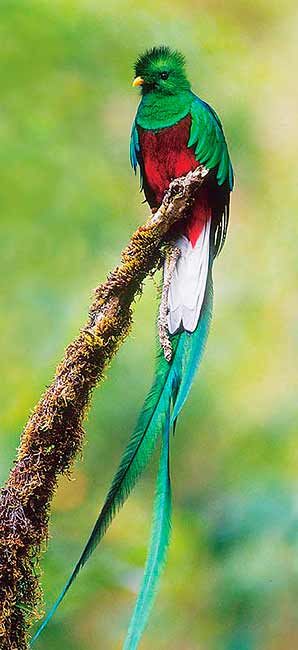
Both parents take turns at incubating, with their long tail-covert feathers folded forwards over the back and out of the hole, where they tend to look like a bunch of fern growing out of the hole. The incubation period lasts about 18 days, during which the male generally incubates the eggs during the day while the female incubates them at night. When the eggs hatch, both parents take care of the young, feeding them fruit, berries, insects, lizards, and small frogs. However, the female often neglects and even abandons the young near the end of the rearing period, leaving it up to the male to continue caring for the offspring until they are ready to survive on their own.
Resplendent Quetzals are weak fliers. Their known predators include the Ornate Hawk-Eagle and owls as adults, Emerald Toucanets, Brown Jays, Long-tailed Weasels, squirrels, and the Kinkajou as nestlings or eggs.[7]